JAJU732C June 2019 – July 2022
- 概要
- Resources
- 特長
- アプリケーション
- 5
- 1System Description
- 2System Overview
- 3Circuit Description
- 4Hardware, Software, Testing Requirements, and Test Results
- 5Design Files
- 6Related Documentation
- 7Terminology
- 8About the Author
- 9Revision History
4.4.1 Lab 1
Compile the project by selecting Lab 1: Open Loop PWM in the drop-down menu of Project Options from PowerSUITE GUI. This lab is intended to validate the PWM outputs and can be checked directly using TIDA-010054 HW or using the F2804X control card with a docking station.
Run the project by clicking the green run button in CCS.
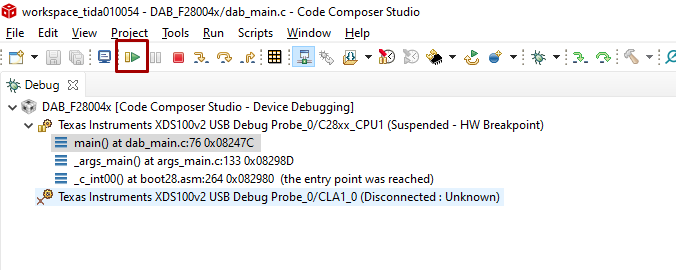 Figure 4-10 Run CCS
Figure 4-10 Run CCSPopulate the required variables in the watch window by loading javascript ' setupdebugenv_lab1.js' in the scripting console.
 Figure 4-11 Loading Labs
Figure 4-11 Loading Labs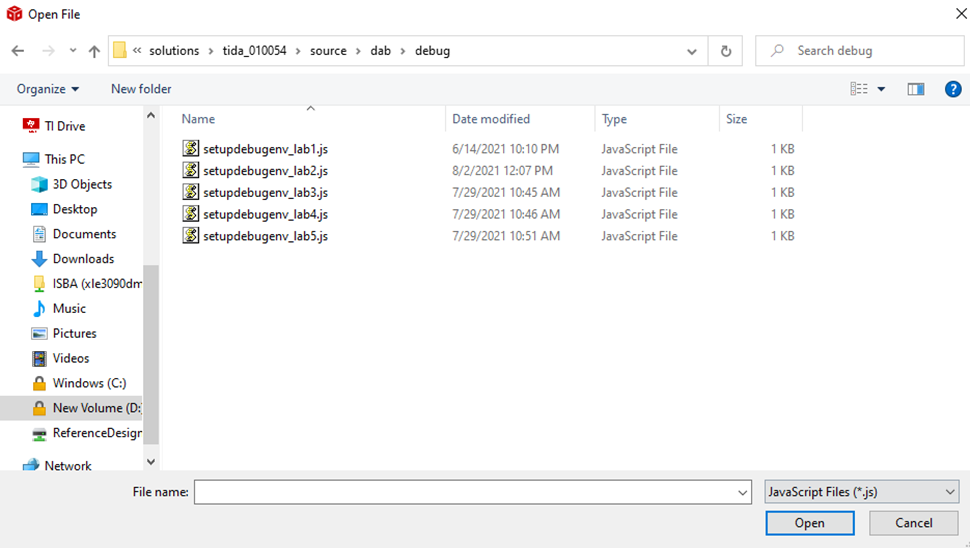 Figure 4-12 Select a Lab
Figure 4-12 Select a Lab- After running the script, the
watch window is populated with the variables in Figure 4-13.
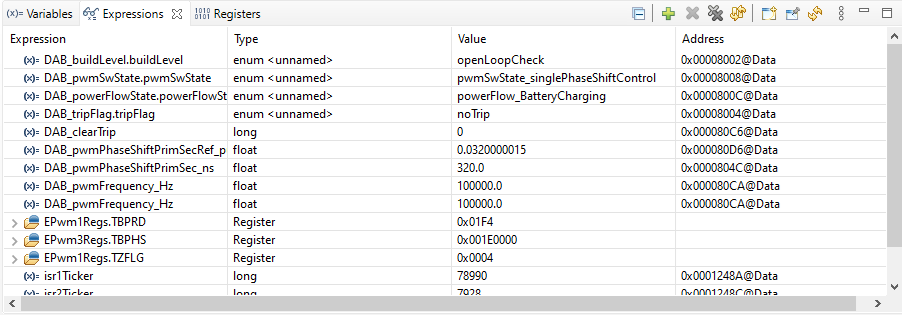 Figure 4-13 Watch Window
Figure 4-13 Watch Window - Enable PWM by writing “1” to the DAB_clearTrip variable. (This variable resets to zero post writing and its normal)
- Pass
criteria for Lab1
Connect probes on PWM1A (Q1), PWM1B (Q2), PWM3A(Q5), and PWM3B (Q6).
1A and 1B are a complimentary pair, 3A is in sync with 1A with the specified phase shift, and the phase shift is controlled by the variable, DAB_pwmPhaseShiftPrimSecRef_pu.
Check the following:
- Frequency is 100 kHz
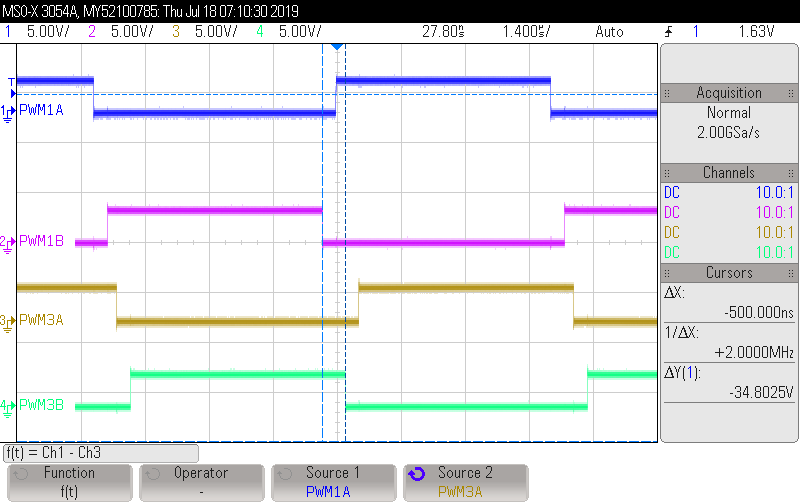 Figure 4-14 100 kHz
PWM
Figure 4-14 100 kHz
PWM - Now change the phase shift to 0.05 → 500 ns, to see more observable
phase shift
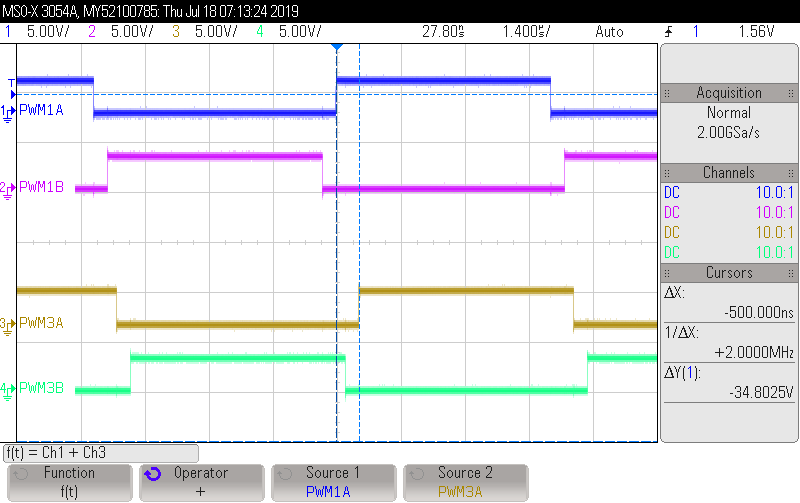 Figure 4-15 Phase Shift
500 ns
Figure 4-15 Phase Shift
500 ns - Phase shift matches that specified by the variable on the oscilloscope.
Check for non-clock ticks, that is, sub 10-ns internals of phase shift
to verify high-resolution operation. In Figure 4-16 and
Figure 4-17, the
phase shift is measured using the oscilloscope to be approximately 500
ns for 500-ns setpoint and approximately 502 ns for a 502-ns setpoint,
small jitter approximately 1–2 ns can be the measurement error. CAUTION: Phase shift is not recommended to be operated beyond 0.45 pu.
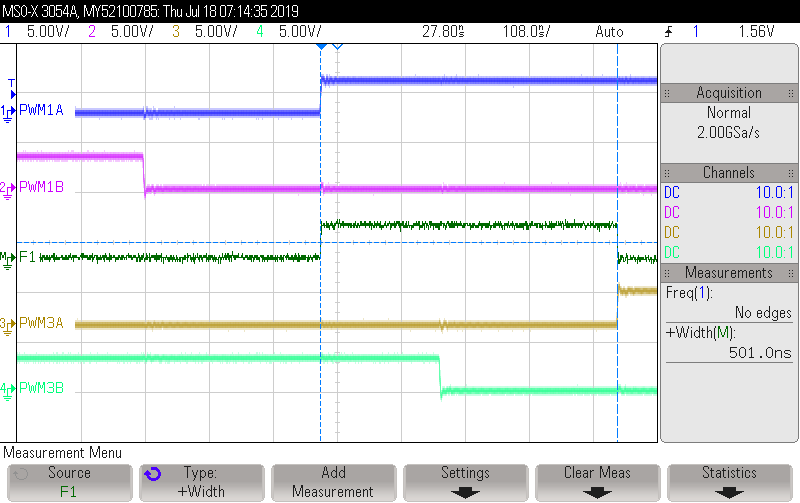 Figure 4-16 High
Resolution Phase Shift 500 ns (1 ns Jitter Error)
Figure 4-16 High
Resolution Phase Shift 500 ns (1 ns Jitter Error)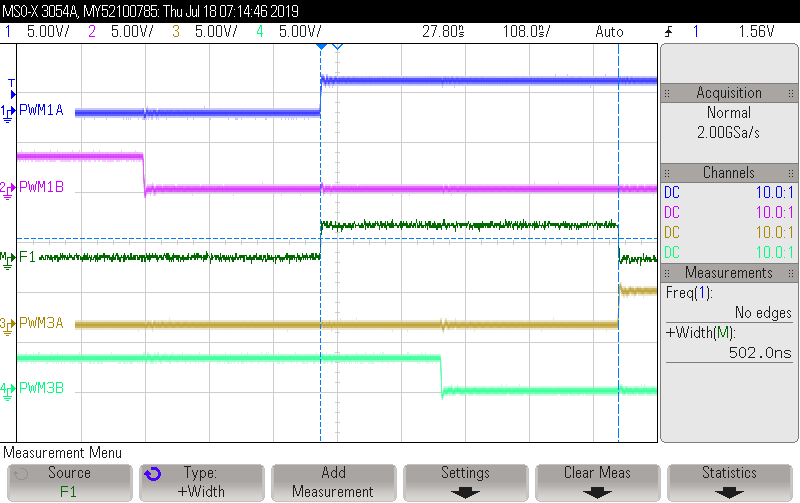 Figure 4-17 High
Resolution Phase Shift 502 ns
Figure 4-17 High
Resolution Phase Shift 502 ns - Change the PWM probes to PWM1A, PWM1B, PWM2A, and PWM2B.
- Verify PWM1A and 2B are in sync and in phase
- Verify PWM1B and 2A are in sync and in phase
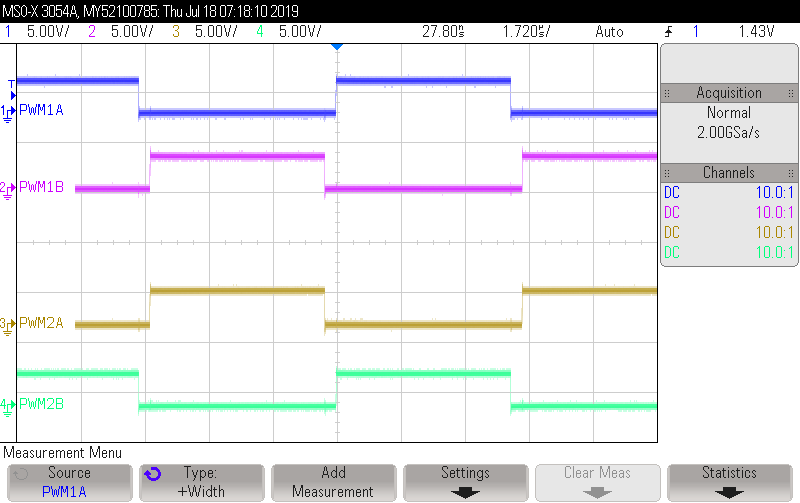 Figure 4-18 PWM in
Sync
Figure 4-18 PWM in
Sync - Verify that they remain in sync and in phase as the phase shift for sec
side PWM is changed:
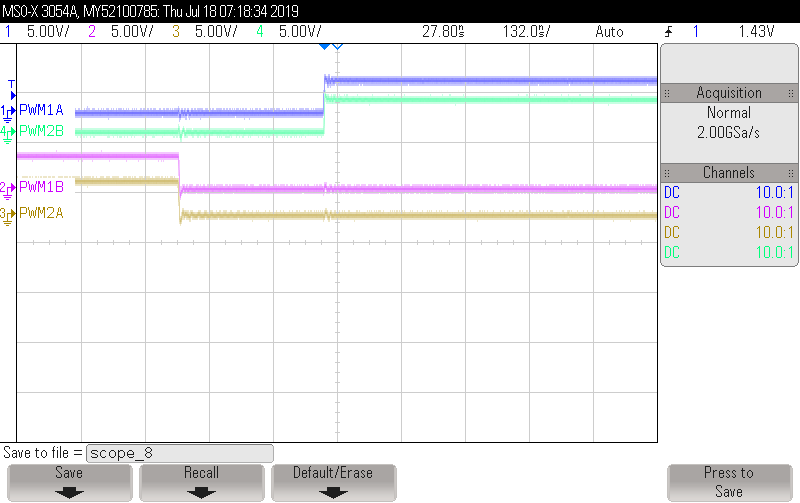 Figure 4-19 PWM in Sync
With Phase Shift
Figure 4-19 PWM in Sync
With Phase Shift
- Frequency is 100 kHz